Tourism Cultural Sites in Uganda
1. KASUBI TOMBS
The Kasubi tombs constitute a site embracing 26.8 hectares of Kasubi hillside within Kampala city.It is the site of the burial grounds for four kabakas (kings of Buganda) and other members of the Buganda royal family. As a result, the site remains an important spiritual and political site for the Baganda people, as well as an important example of traditional architecture. It became a UNESCO World Heritage site in December 2001 when it was described as one of the most remarkable buildings using purely vegetal materials in the entire region of sub-Saharan Africa. Some of the major buildings were almost completely destroyed by a fire in march 2010, the cause of which is under investigation. As a result, in July 2010 it was included in the list of world heritage sites in danger. The Buganda kingdom vowed to rebuild the tombs of their kings and president Museveni said the national government would assist in the restoration of the site, reconstruction started in 2014, funded by the government of Japan.

2. NAMUGONGO SHRINE
The Basilica is located at Namugongo, Kira municipality Wakiso district in central Uganda. Namugongo is located approximately 14 km (9 miles) by road, northeast of the central business district of Kampala, Uganda’s capital and largest. It is one of the unique and biggest roman catholic church in Africa which was constructed in commemoration of the 22 catholic martyrs that were killed between 1885 and 1887 by the king of Buganda kabaka Mwanga 11. Namugongo shrine is one of the most visited sites in the country, the shrine which is also a church plays a very important role in the religious and cultural affairs of the country, it was constructed in 1967 and was complete in 1975 and it was built on the exact spot where Charles Lwanga and majority of other martyrs were killed, it’s also the same spot where the original church parish church was standing. The shrine stands tall and was constructed in an architectural African hut design with wooden doors. The basilica shrine has 22 copper pillars which are over 100 ft long with beautiful and unique interior and exterior design. Martyrs Day every year on 3rd June is an important event in Uganda. The day, a public holiday, is fast becoming an African religious event celebrating these Saints of the Church.

3 BAKER’S FPORT
Baker’s fort also known as fort Patiko was built by Samuel Baker in Patiko Uganda and construction of the fort was completed in December 25, 1872. It’s found in Gulu district, situated approximately 1.8 km from ocecu hill, famously known as Got Ajulu. The word julu Is an Acholi word that means to raise whereas got means rock/ hill/ mountain. This was constructed to aid stop slave trade in the region and later after Samuel Baker left in 1888, the fort was used by Emin Pasha and Charls Gardon to serve the equatorial province of the British protectorate as Governors.
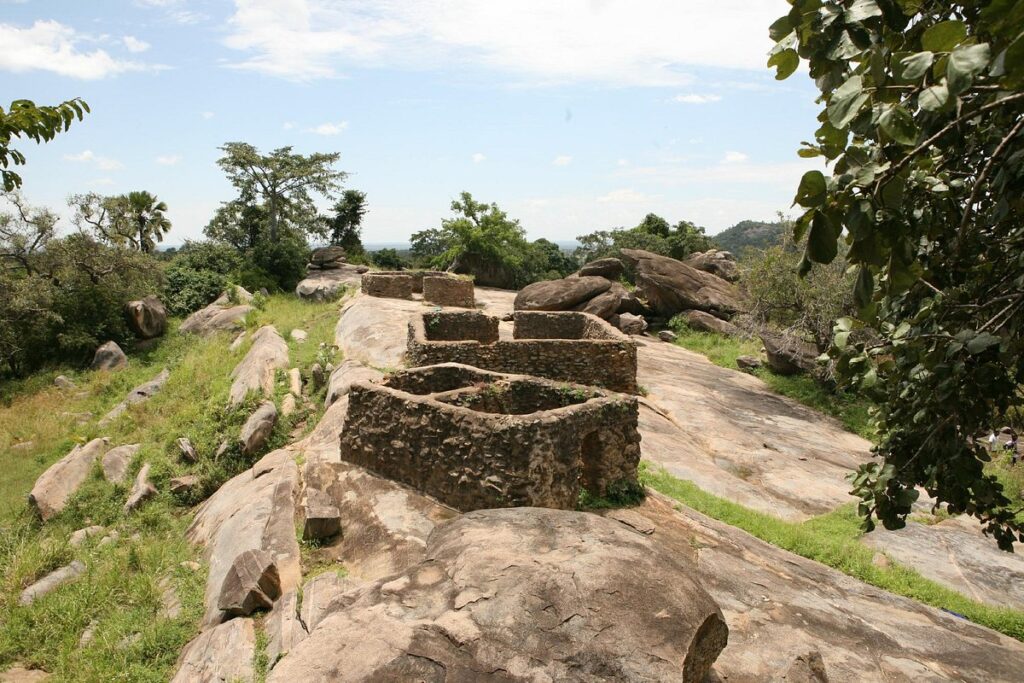
4 BIGO BYA MUGENYI
The site is believed to have been the capital of the Chwezi dynasty, is found in kabeho village, Ntuusi sub county, in Sembabule district. It is at Bigo bya mugenyi that the history of the nomadic Bachwezi people of the 14yh century can be traced. According to the guides at Bigo bya mugenyi, one can still see the Bachwezi if they pray for it. It is believed that the Chwezi still appear and disappear mysteriously at this site. The Chwezi are believed to have landed on the Nile around 2000 BC and are said to have found the ancient Kitara empire, which consists of areas of present-day central Uganda, northern Uganda Tanzania, western Kenya, and eastern Congo. The Chwezi are also credited with the introduction of the unique, long horned Ankole cattle, coffee growing and the first organized way of governance in Uganda.
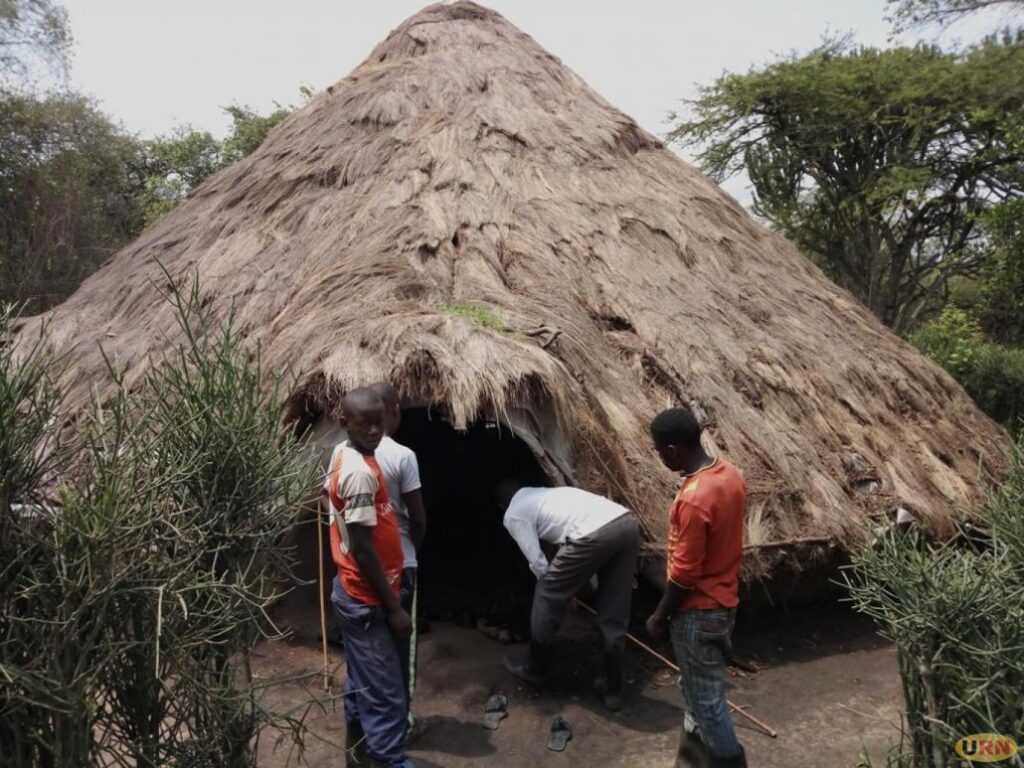
It is believed that after conquering these regions, the Bachwezi with Ndahura as their king setup their headquarters at Nakayima present day Mubende district. The Chwezi dynasty was short lived with a history of three kings, Ndahura, Mulindwa and Wamala who were accorded the status of demi-gods and worshipped by many people. Bigo bya mugenyi palace has got numerous African traditional grass thatched huts with a site where the Bachwezi people always go to pray from to ask their gods for blessing and wealth. The site can be accessed 60 km from Sembabule town, tourists visiting the site are supposed to report to the tourism police that’s a short distance from the site.
5 KARAMBI TOMBS
The karambi tombs also known as the royal tombs are situated south of fort portal town in the western part of Uganda, these tombs belong to the royal family of Toro kingdom. The tombs are a burial ground for three Toro kings (Abakama) Kyebambe Kamurasi, Olumi Kaboyo 11 and Rukidi 111. The tombs have got three respective houses of the tombs, and also keeps the royal regalia that were formerly used by each of the late kings, the tombs are a very important palace to the people of Toro kingdom. The graves of the princes and princesses are also laid just outside the tombs.

The karambi tombs also hold the historical stories about the Toro kingdom for tourists interested in cultural tours this is one of the best places to stop over and learn about Toro culture in the western part of Uganda. The Toro people have very unique cultural values and ways of leaving that are very interesting, tourists can also engage in the local’s day to day activities to have a feeling of belonging in a real African homestead.
6 MPARO TOMBS
The tombs are the final resting grounds of king Kabalega 11 who was exiled in Seychelles by the British empire in 1899, Tito winyi plus several princes, princesses, and royals of Bunyoro Kitara kingdom. The Bunyoro Kitara kingdom was once the most powerful kingdom in the country. Situated in western Uganda comprising of 5 districts Masindi, Hoima, kiryandongo, Kibale and Buliisa district. At the tombs, the remains of the kings were just laid out in small mausoleums and not buried. Each of the tomb is covered with a bank cloth, a cultural cloth made from cultural trees. Next to the cloth are the royal regalia and other cultural tools and belongings that respective kings used during their rule.

The most immense tomb at Mparo tombs holds the remaining’s of their greatest king, Omukama Kabalega. Omukama Kabalega is remembered for his exceptional endeavors to protect Bunyoro Kitara empire from the British rule that was taking over Buganda by then. He is referred to as a brilliant fighter who always made the right decisions. Omukama Kabalega is still admired for his courage, exceptional achievements, and noble qualities. A number of roads, schools, and buildings have been named after him. Mparo tombs is situated about 4 km from Hoima town on the Hoima-Masindi highway.
7 SEZIBWA FALLS
Sezibwa falls is a heritage site for Baganda people and kingdom preserving and showcasing the ancient culture of the Baganda, the falls have shrines where you get to learn more about the fascinating traditional religion of Baganda people. The site is located 32 km along the Kampala jinja highway in Buikwe district, it takes approximately 30 minutes’ drive from the capital Kampala depending on the traffic flowing out of the city. Later you will come to an area with many shrines where people come for worship and other performing cultural rituals at the top of the falls. The traditional healers have different shrines where people camp for days or overnight depending on their request as they seek for blessings and removal of curses from their ancestors through the traditional doctors. The worshipers believe the falls have supernatural powers that connect them to their ancestors to receive long life, defeat of their enemies, wealth among their needs. For example, one of the prominent shrines is Mbuga ya Musoke where they claim to have a resident python known as Nalongo with a traditional healer performs ceremonies for those seeking love, children, business success or good harvest.
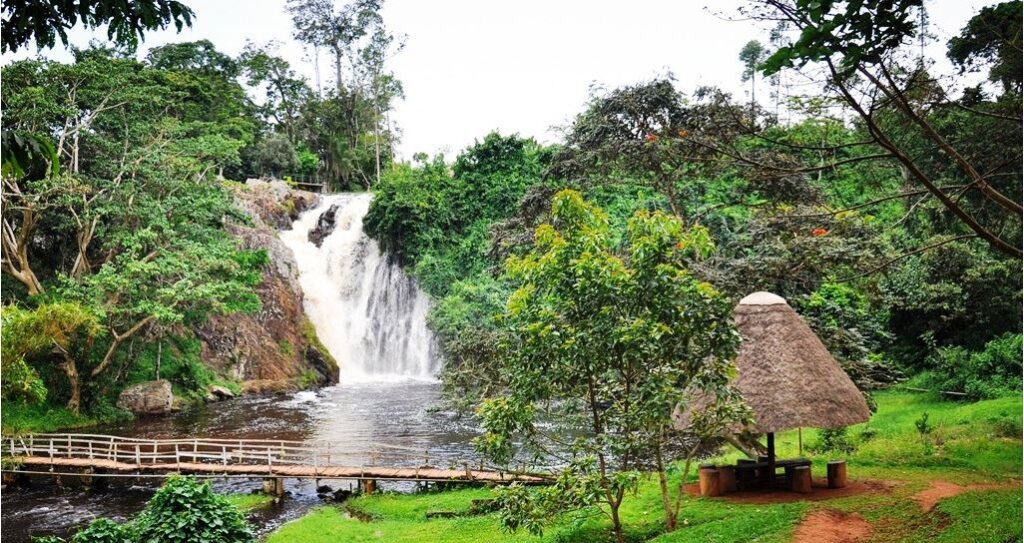
8 NAKAYIMA TREE
Nakayima tree is located on the extreme top of Mubende hill along Kampala – fort portal highway and approximately 3.8 km from Mubende town and 181 km from Kampala. Nakayima tree is one of the oldest trees in existence, it is estimated at about 650 years named after princess Nakayima, a royal princess who roamed around the tree and is believed to have disappeared into the tree. The tree is said to have special powers for wealth, good health and healing. Nakayima was the wife of Ndahura the last king of the Bachwezi. Ndahura was the son of Nyinamwiru a daughter of Bukuku from the Batembuzi dynasty. The Batembuzi dynasty were known to have kings that were akin to gods and after serving their purpose, they would disappear underground.
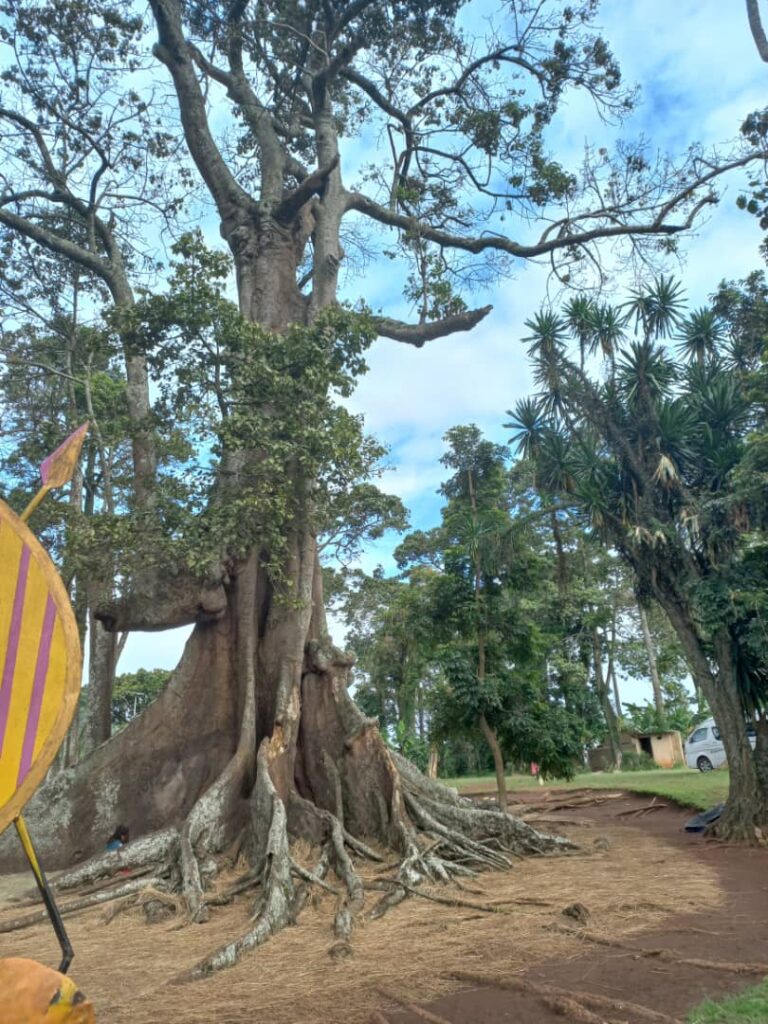
The tree is considered as an important part of the African spirituality, due to its spiritual powers the tree draws people from all over the to seek solutions to their problems, ask for blessings among other things. The buttress rooted tree which is not very far from being a cave has 18 opening or call them rooms in which the care takers and people who come to pray sit. The believers sit on mats or grass and are allowed to smoke pipes openly as they seek the gods.
9 NKOKONJERU TOMBS
The tombs are found in kakiika division, Mbarara district. The tombs are resting places of the (Bagabe) kings of Ankole kingdom; one, Omugabe Edward Solomon Kahaya 11, who was buried in 1944, and another, Omugabe sir Charles Godfrey Rutahaba Gasyonga 11 who was buried in 1982 marking the end of his 23 years. There are also other eight graves which are minor, a number of cultural rites and values are normally performed in the site, it’s an important historical site to the people of Ankole kingdom. One unfortunate thing about the land is that it was sold to some private developers, its claimed that the late prince john Barigye was involved in the selling of this land but the other royal officials have no idea what happened to the land. But other royal say it was grabbed by some mysterious people up to date.
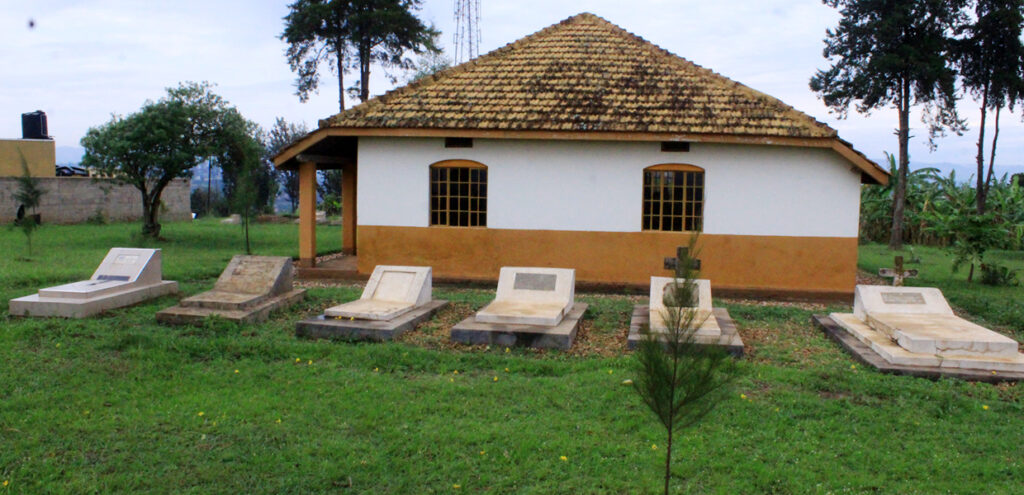
The late prince john Barigye is said to have sold the land because he was denied coronation before he died and that depressed him, he was known as a king who never sat on his throne. The site has been deserted for years except cattle grazers who encroach it with their cattle.
10 NYERO ROCK PAINTINGS
The Nyero rock paintings are located in eastern Uganda in Kumi district, 8 km (5.0 mi) west of Kumi town, about 250 km (155.3 mi) from the capital city Kampala. The Nyero rock paintings are among the most important rock art in Uganda. Nyero rock paintings are amazing cultural historical makings that are believed to have been made by ancient beings and have turned out to be one of the top tourist destinations in Uganda. The different paintings have been presented many times on the different art exhibitions but, the Nyero rock paintings are century winning art facts that have existed for a long time, about many centuries ago. The Nyero rock paintings exhibit real truth about the existence of the smartest people that came before the modern-day civilization. Nyero rock paintings are also proof to tag all the myths and the legends about the ancient people of eastern Uganda and foundation of east African history.

11 NAGGALABI BUDDO CORONATION SITE
The site is located on Budo hill, Wakiso district in Busiro county. The site can be accessed from Kampala Masaka highway, southwest of Kampala district and about 14 km from the city Centre. It is a cultural, religious and heritage site where the kings of Buganda kingdom are crowned. It is also believed to be the place where the first king of Buganda kingdom won the battle for the crown after a fighter with his brother, prince Bemba. He declared that all successive kings of Buganda would be crowned at that place. The site has been in existence since the 14th century, kintu’s brother Bemba lived in a house called Buganda which was located at Naggalabi buddo, after defeating Bemba in a battle, kintu slept in Bemba’s house as a sign of victory thus becoming the Ruler of Bemba’s house. Eventually the name came to denote all the territory that kintu ruled over. In commemoration of kintu’s victory over Bemba, new kings of Buganda are therefore crowned at Naggalabi.

12 IGONGO CULTURAL CENTER
The center is located in Biharwe, which is just 15 km before Mbarara city on the Masaka – Mbarara highway opened at Christmas 2011 by Ugandan president Museveni, the center promotes the cultural heritage of southwest Uganda which is encompassed in the center’s motto wisdom is rooted in the past. It was set on the grounds of a former palace of the Ankole king, this quality museum explores the people of southwestern Uganda, particularly the Ankole through artifacts. It is a cultural village replica with a heap of information. The museum was built to commemorate a victory for the Ankole kingdom 500 years ago, following an eclipse that saw the invading king retreat in fear and never returned. The center is a collection of artifacts of all tribes of southwestern Uganda including the Bakiga and Banyankole among others. The center represents a rich history and heritage trail that backs to the prehistoric era.

13 KATEREKE PRISON DITCH
It is claimed to have been dug by former king of Buganda, kabaka Kalema in the 19th century. It is a unique structure from a deranged and savagery time in the history of Buganda kingdom. This ditch that circles an area of about 70 meter in diameter today features as an attraction and attracts a good number of tourists. The katereke prison ditch has turned into stunning earth works close to 10 m from up to its bottom. It was during the year 1888 that Buganda kingdom was in political confusion, strange people claim to be Muslims hard removed kabaka Mwanga from the throne who was succeeded by kabaka kiwewa though his reign was short lived. After kabaka kiwewa, kabaka Kalema was enthroned.

However, kabaka Kalema wasn’t so comfortable with his rule and was greatly threatened by his siblings (brothers and sisters) who in turn became his political rivals. It wasn’t long before he ordered his clan chiefs to construct a prison and imprisoned all his siblings (princes and princesses). This prison is the current katereke prison ditch. Despite the horrible action taken by kabaka Kalema, he still felt threatened even after imprisoning his so claimed rivals. This pushed him further to take away the lives of the prisoners 30 of his brothers and sisters by sending another order to have them slaughtered. This built fear in the kingdom especially among his subjects who feared their lives would be taken next. After a year, kabaka Mwanga returned to the throne and exiled kabaka Kalema who passed away months after. Its claimed other royal prisoners were also starved in the prison ditch during the savagery time of kabaka Kalema’s reign.
The katereke prison ditch is 30 minutes away from Kampala past by road, its situated in Buddo, Masaka road in a place called Nsangi.




